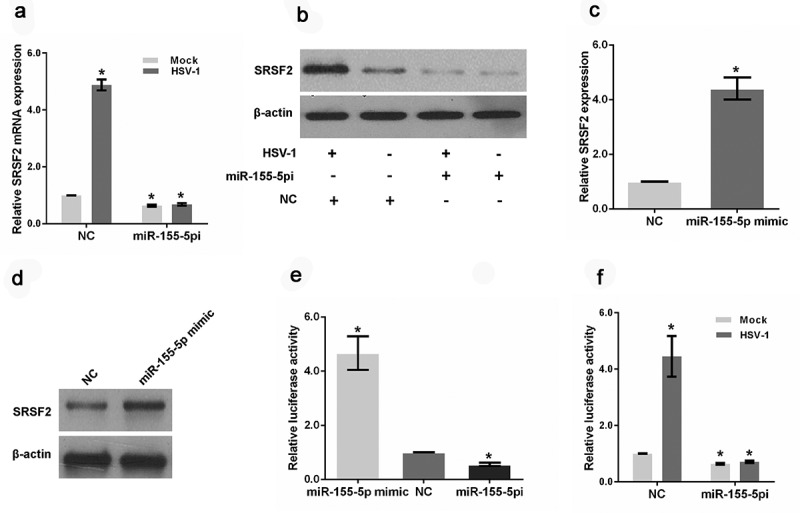Figure 2.

MiR-155-5p is involved in HSV-1 infection-mediated SRSF2 expression. (a). HeLa cells transfected with miR-155-5p inhibitors or negative control were mock infected or infected with HSV-1 for 4 hours. Relative SRSF2 level was analyzed with real-time PCR. The data were normalized to the negative control level in the mock-infected cells. (b). HeLa cells transfected with miR-155-5p inhibitors or negative control were mock infected or infected with HSV-1 for 4 hours. The cells were harvested and subjected to a western blot analysis to analyze the expression of SRSF2 and β-actin. (c). HeLa cells were transfected with a miR-155-5p mimic or negative control. The relative SRSF2 level was analysed with real-time PCR. The data were normalized to the negative control level. (d). HeLa cells were transfected with a miR-155-5p mimic or negative control. The cells were harvested and subjected to western blotting analysis to analyse SRSF2 and β-Actin expression. (e). After co-transfection with the miR-155-5p mimics, inhibitors or negative control and the pGL3 enhancer plasmid containing the SRSF2 promoter for 36 hours, the HeLa cells were infected with HSV-1 at an MOI of 1 for 4 hours. The relative transcriptional activities of the SRSF2 promoter were determined with a luciferase assay. (f). After co-transfection with the miR-155-5p inhibitors or negative control and the pGL3 enhancer plasmid containing the SRSF2 promoter for 36 hours, the HeLa cells were infected with HSV-1 or mock infected. The relative transcriptional activities of the SRSF2 promoter were determined with a luciferase assay. The data were normalized to the negative control level in the mock-infected cells. *p < 0.01.
